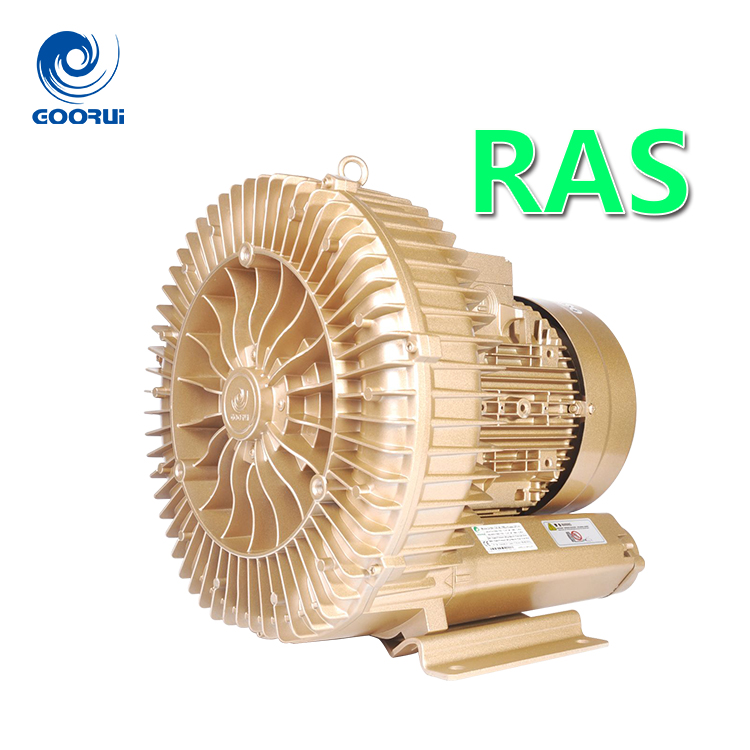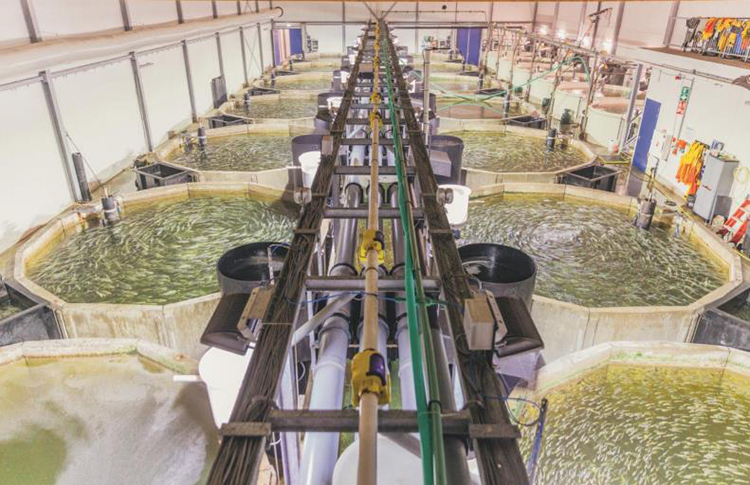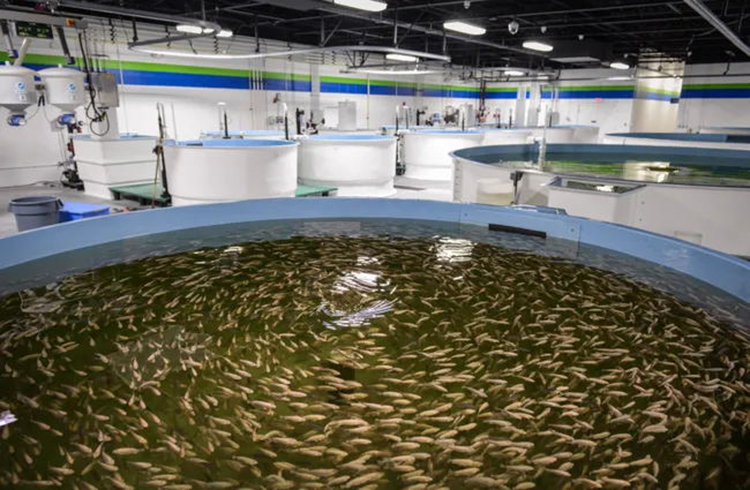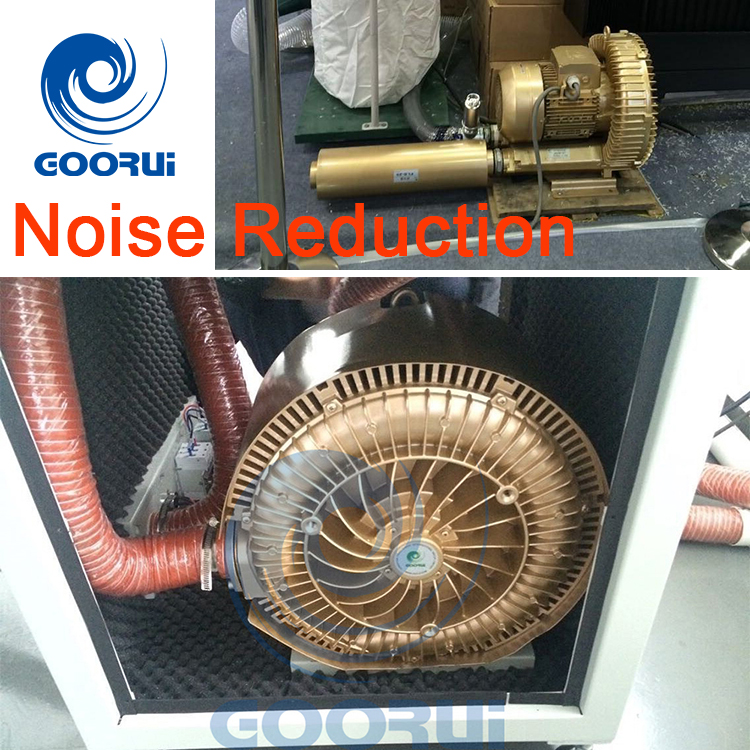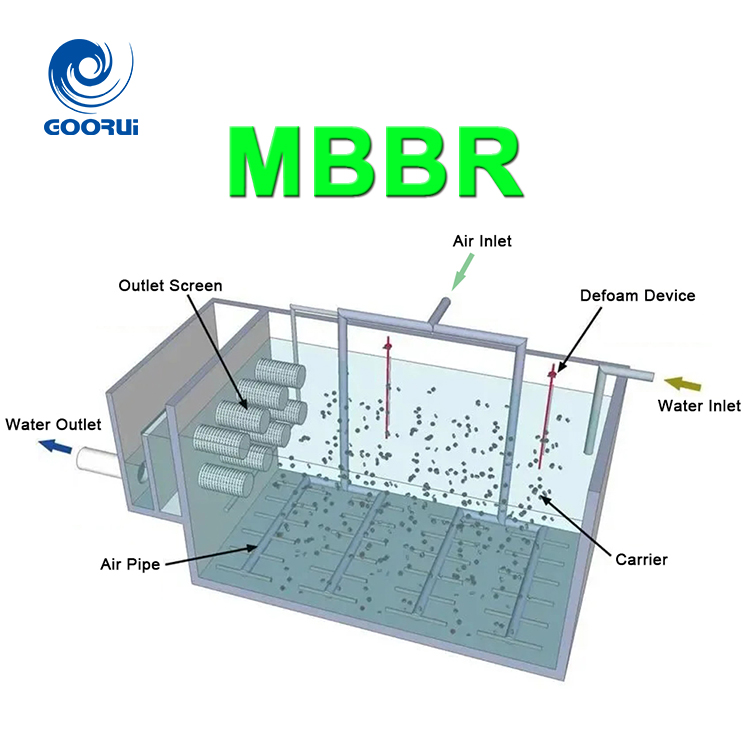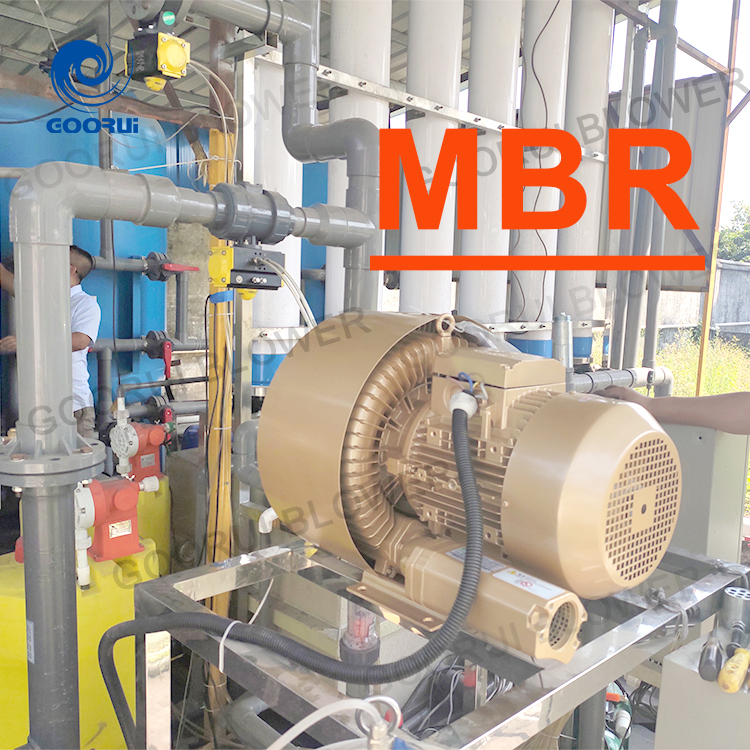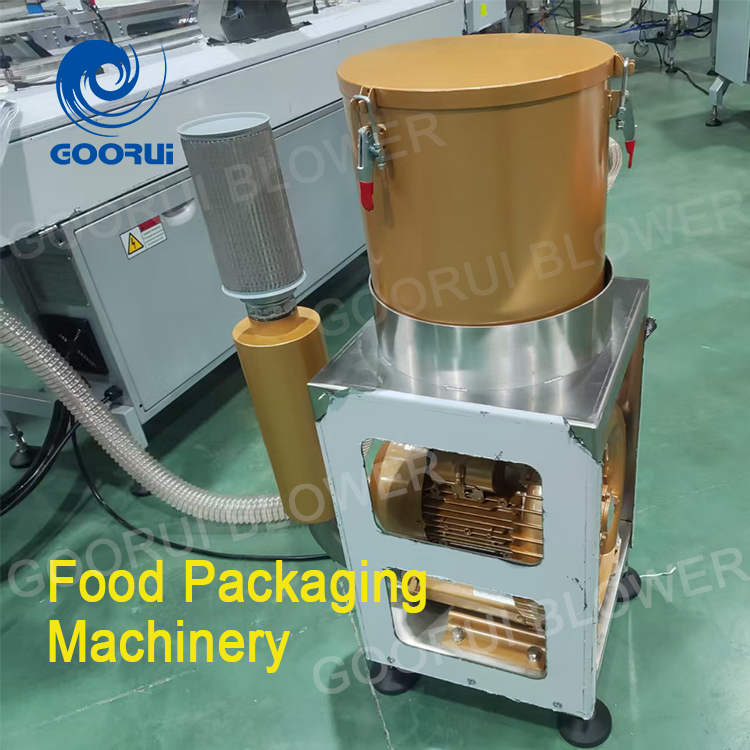Considering environmental sustainability and vulnerability to the effects of climate change on fish production, one of the potential adaptation strategies is “Recirculating Aquaculture Systems (RAS)”. RAS are eco-friendly, water efficient, highly productive intensive farming system, which are not associated with adverse environmental impacts, such as habitat destruction, water pollution and eutrophication, biotic depletion, ecological effects on biodiversity due to captive fish and exotic species escape, disease outbreaks, and parasite transmission. Moreover, RAS operate in indoor controlled environment, and thus, only minimally affected by climatic factors, including rainfall variation, flood, drought, global warming, cyclone, salinity fluctuation, ocean acidification, and sea level rise. However, energy consumption and greenhouse gas (GHG) emissions are the two most stringent limiting factors for RAS. Despite these potentials and promises, RAS have not yet been widely practiced, particularly in developing countries, due to complex and costly system designs. Further research with technological innovations are needed to establish low-cost, energy efficient RAS for intensifying seafood production, reducing GHG emissions, and adaptation to climate change.
Aquaculture, the cultivation of aquatic plants and animals (e.g., finfish, shellfish, and seaweed), is the world’s fastest growing food production sector, with an average annual growth rate of 5.3% during the period 2001–2018, and production has increased by over 600% since 1990 (FAO, 2020). Global aquaculture production achieved 82.1 million tons in 2018, of which inland aquaculture produced 51.3 million tons (62%), while coastal and marine aquaculture1 reached 30.8 million tons (38%) (FAO, 2020). Aquaculture is implemented in different environments and geographical locations (from freshwater to marine, and from polar to tropical waters), using different technologies and farming systems, and culturing a great variety of species, with a total of 622 aquatic species being recorded in aquaculture worldwide (FAO, 2020). Asia contributes 89% to global aquaculture production (FAO, 2020), and aquaculture, with its expansion outpacing global population growth, is playing an important role in boosting food production for contribution to food security and human nutrition (Allison, 2011; Béné et al., 2016). Despite aquaculture growth, the challenge of feeding an ever-increasing world population, which is projected to reach 9.7 billion by 2050 (United Nations, 2019), is a vivid reality, which is central in global political and scientific debates (Berners-Lee et al., 2018; Ehrlich and Harte, 2015). Because of population growth and stagnation of capture fisheries, global aquaculture production is challenged to achieve remarkable targets, estimated to possibly reach 109 million tons in 2030 (FAO, 2020), and 140 million tons in 2050 (Waite et al., 2014).
To achieve the required further increase in global seafood production, aquaculture is envisaged as the only available solution, but it could bring additional adverse environmental effects, if its expansion is not based on sustainable farming systems. Accordingly, the rapid growth of aquaculture has been linked to raising concerns of its environmental sustainability (Hall et al., 2011; Martinez-Porchas and Martinez-Cordova, 2012). Broadly, aquaculture has already been increasingly associated with a great variety of negative environmental impacts, including habitat destruction (e.g., mangroves, rice fields, wetlands), water pollution and eutrophication, biotic depletion, disease and parasite transmission, and greenhouse gas (GHG) emissions (Ahmed et al., 2019; Hall et al., 2011; Naylor et al., 2000). For example, some intensive aquaculture practices have been reported to cause antibiotic pollution, eutrophication, land occupation, and other environmental hazards (Hall et al., 2011). The invasion of exotic (i.e., nonindigenous or alien) fish species in some aquaculture systems have been reported to have potential negative effects on biodiversity and ecosystem (De Silva et al., 2009; Naylor et al., 2001). Coastal aquaculture, particularly shrimp cultivation, has been reported to cause devastating effects on mangrove forests (Hamilton, 2013; Richards and Friess, 2016; Thomas et al., 2017), with a broad range of impacts on the local biodiversity, ecosystems, and societies (Bush et al., 2010; Lebel et al., 2002; Pàez-Osuna, 2001; Primavera, 2006). Salmon aquaculture in marine environment has also been criticized for a wide range of environmental impacts, spanning from water pollution to pathogen transfer to wild salmon as well as other wild fish (Ford and Myers, 2008; Taranger et al., 2015).
The environment, on the other hand, has a series of impacts and imposes certain limitations on aquaculture, with climate change being a major threat to enhance world fish production (Brander, 2007; De Silva and Soto, 2009). Different climatic variables including rainfall variation, flood, drought, cyclone (with hurricane, storm, and typhoon), global warming, sea surface temperature change, salinity fluctuation, ocean acidification, and sea level rise have profound effects on aquaculture operations (Ahmed et al., 2019). Within this context, coastal and marine aquaculture appear to be more susceptible to climate change than land-based freshwater aquaculture. In essence, future climate change will certainly have severe consequences for increasing aquaculture production (Ahmed et al., 2019; De Silva and Soto, 2009). It is therefore necessary to develop and implement adaptation strategies to cope with these challenges.
Considering the environmental concerns and impacts, as well as the vulnerability to the effects of climate change and other environmental variables of fish production in aquaculture, one of the potential and increasingly proposed adaptation strategies is the implementation of “Recirculating Aquaculture Systems (RAS)” (Ahmed et al., 2019; Bueno and Soto, 2017). In fact, RAS allow for rising fish in a land-based, indoor, and controlled environment to minimize the direct interactions between the production processes and the environment. The aim of this article is to highlight the environmental sustainability and climate change adaptability of RAS. This study also examines the opportunities and challenges for a wider adoption of RAS, before concluding with some recommendations for sustainable aquaculture production and climate change adaptation through RAS.


